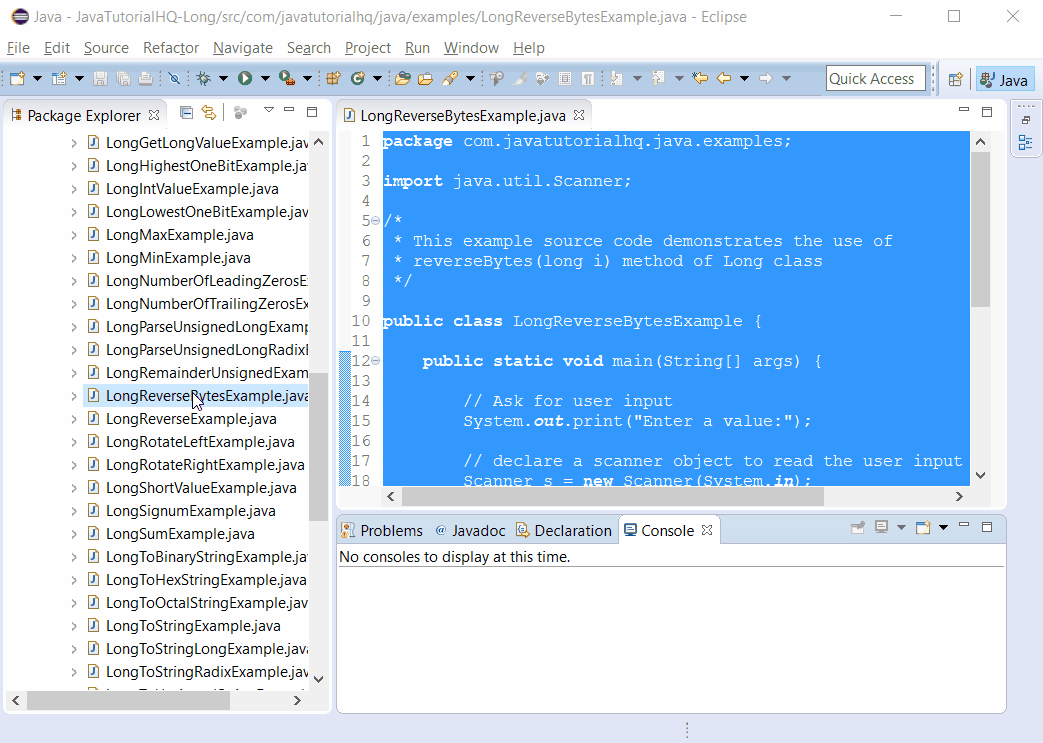java.lang.Long reverseBytes(long i)
Description
Make a note that the reverseBytes() method of Long class is static thus it should be accessed statically which means the we would be calling this method in this format:
Long.reverseBytes(method args)
Non static method is usually called by just declaring method_name(argument) however in this case since the method is static, it should be called by appending the class name as suffix. We will be encountering a compilation problem if we call the java reverseBytes method non statically.
Method Syntax
public static int reverseBytes(long i)
Method Argument
| Data Type | Parameter | Description |
|---|---|---|
| long | i | the value whose bytes are to be reversed |
Method Returns
The reverseBytes(long i) method of Long class returns the value obtained by reversing the bytes in the specified long value.
Compatibility
Requires Java 1.5 and up
Java Long reverseBytes(long i) Example
Below is a simple java example on the usage of reverseBytes(long i) method of Long class.
package com.javatutorialhq.java.examples;
import java.util.Scanner;
/*
* This example source code demonstrates the use of
* reverseBytes(long i) method of Long class
*/
public class LongReverseBytesExample {
public static void main(String[] args) {
// Ask for user input
System.out.print("Enter a value:");
// declare a scanner object to read the user input
Scanner s = new Scanner(System.in);
// assign the input to a variable
long value = s.nextLong();
// get the value obtained by reversing the order of the bytes in the
// two's complement representation
long result = Long.reverseBytes(value);
// print the result
System.out.println("Result:" + result);
// close the scanner object
s.close();
}
}
Sample Output
Below is the sample output when you run the above example.

